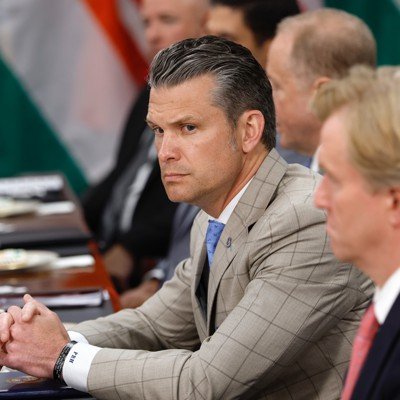Across the federal government, tens of thousands of blue-collar federal employees are still waiting on their 2025 pay raise, all because of Defense Secretary Pete Hegseth’s purge of advisory committees as the Pentagon.
For most federal employees, receiving their share of the (mostly) annual across-the-board pay increase is a simple process. The president issues an alternative pay plan—to avoid massive automatic increases due to the Federal Pay Comparability Act—or Congress stipulates in appropriations legislation how it would override the president, and then the Office of Personnel Management publishes new pay tables in time for the first full pay period in January.
Raises for blue collar federal workers, hired under the Federal Wage System, are based on an extrapolation of those pay raises along with a series of wage surveys conducted by the Department of Defense Wage Committee. The committee then votes to implement wages region by region over the course of the year.
But in March, Hegseth issued a memo instructing all advisory committees within the Defense Department to halt operations for a 45-day review to “ensure that the department’s advisory committee efforts align with our most pressing strategic priorities.” At the conclusion of that six-week period, Hegseth purged all the members of the Pentagon’s advisory panels and ordered the recommendation of new members within 30 days.
As a result, the wage committee, whose members are required by federal regulations to consist of three agency officials and two union leaders, has been unable to meet. According to data provided by the Defense Civilian Personnel Advisory Service and the American Federation of Government Employees, the panel’s shuttering has stalled pay raises for blue collar feds in 87 of the 248 local wage areas, or roughly 60,000 workers.
“They’ve essentially imposed a pay freeze on this segment of the federal workforce, and they’ve done it administratively and in contravention of what is in the continuing resolution and in appropriations law,” said Jacque Simon, AFGE’s director of public policy. “They’re supposed to pay these people according to the law, which would include a pay adjustment for 2025, and they’re not doing it.”
The Defense Department did not respond to a request for comment.
Though the wage committee is housed within the Defense Department, its decisions apply to Federal Wage System workers across government. According to Office of Personnel Management data, more than 30% of the 170,000 blue collar feds as of September 2024 served at agencies outside of the Pentagon or military service branches, including 33,000 Veterans Affairs Department workers and nearly 5,000 National Park Service employees.
Ron Sanders, a fellow at the National Academy of Public Administration and former chairman of the Federal Salary Council during President Trump’s first term, warned that if the situation is not fixed soon, agencies could see an exodus of workers with highly specialized skillsets.
“This isn’t the Ford Motor Company or GM—these are skilled blue-collar workers,” he said. “The best example I can think of is that these are the people who do the welding and pipe fitting around nuclear reactors for naval propulsion systems. That’s a very scarce skill, and people ought to be worried about what DOD’s strategic workforce plan is for those people … If it’s a gimmick to reap some additional savings and that pay raise eventually goes into effect, I’d lose less sleep than if this was a more permanent freeze, which could cause DOD to continue to hemorrhage blue-collar workers.”




